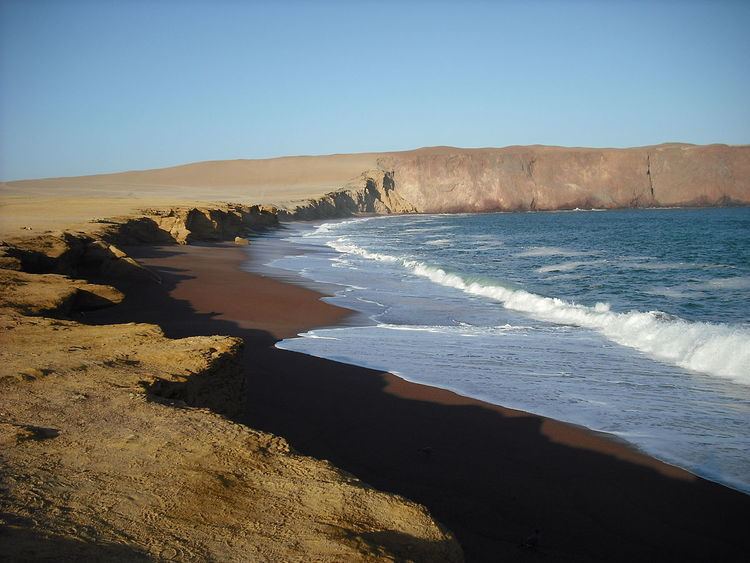Area 3350 km² Designated March 30, 1992 | Established September 25, 1975 | |
 | ||
The Paracas National Reserve is located in Ica, Peru and consists of the Paracas Peninsula, coastal areas and tropical desert extending to the south slightly past Punta Caimán, a total of 335,000 ha (217,594 ha are marine waters and 117,406 are part of the mainland). It includes Bahía de la Independencia (Independence Bay) and miles of coastal waters. Its main purpose is to preserve the marine ecosystem and protect the historical cultural heritage related to ancient indigenous peoples, mostly of the Paracas culture.
Contents
The reserve is home to many species of wildlife, particularly birds (see Paracas Birds, which are largely concentrated at the water's edge in what is called the largest concentration of birds on earth. Near the entrance inside the reserve is the Muséo Sitio de Julio C. Tello. Named for the archeologist who made major discoveries about the ancient Paracas culture, it features artifacts and interpretation, as well as information about the flora and fauna of this unique region.
Protected status
Established in 1975, it is the oldest marine reserve in Peru, and it incorporates a variety of marine habitats and tropical desert. In addition to the biological areas, the reserve protects prehistoric sites of the Paracas culture and other ancient civilizations. Near the museum is the Paracas Necropolis (100 BCE - CE 300), comprising the burial sites known as the Cabezas Largas and Cerro Colorado, where Julio C. Tello found many fine grave goods buried with mummified remains of the Paracas elite.
Also in the reserve is Pampa de Santo Domingo, where archeologists have dated finds of human remains to 6500 BC. Found there was a decorated quena (flute), believed to be the first musical instrument of Peru.
Description
One of the main geomorphological attraction along the Paracas coast, La Catedral arch (the Cathedral) was destroyed during the 2007 earthquake. The Bahia Lagunillas is bordered with red sand beaches, product of the erosion of porphyry rocks that dominate some of the hills of the Paracas Peninsula. On the Paracas Peninsula is the mysterious geoglyph called the Paracas Candelabro, which is believed to date to the Paracas culture about 200 BCE.
